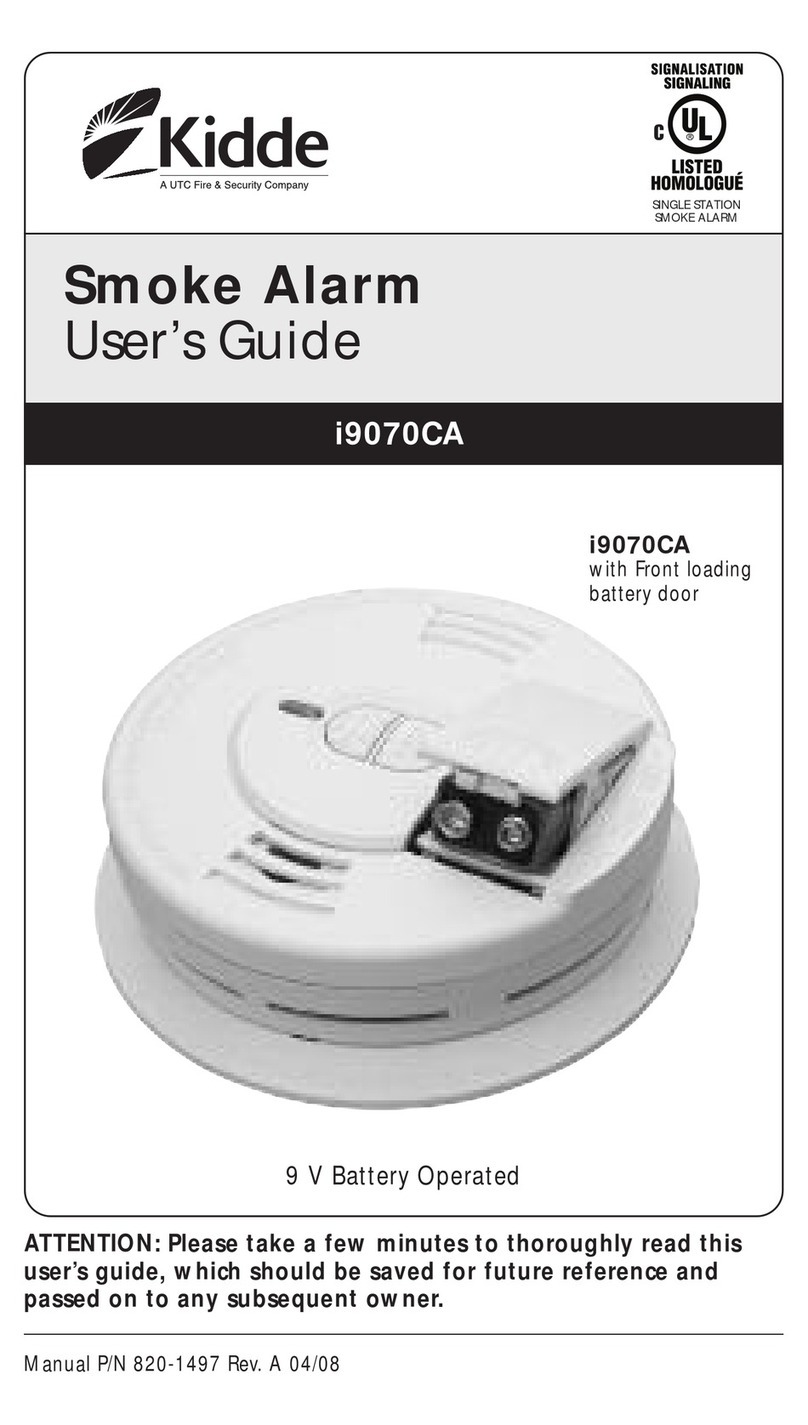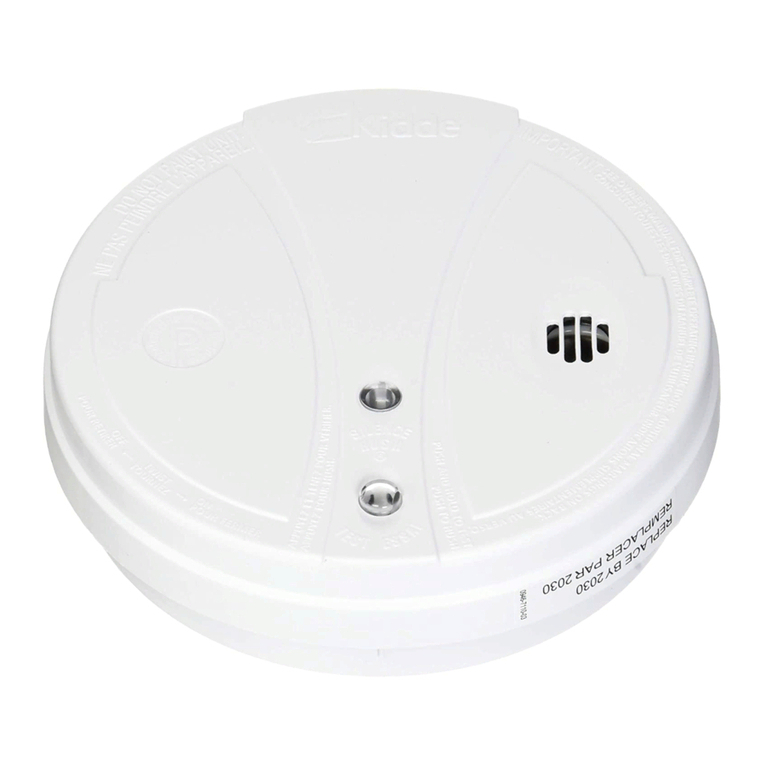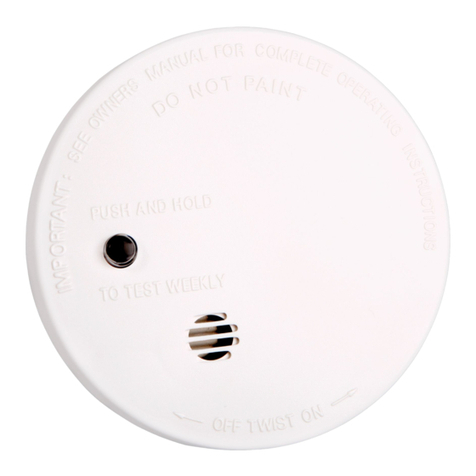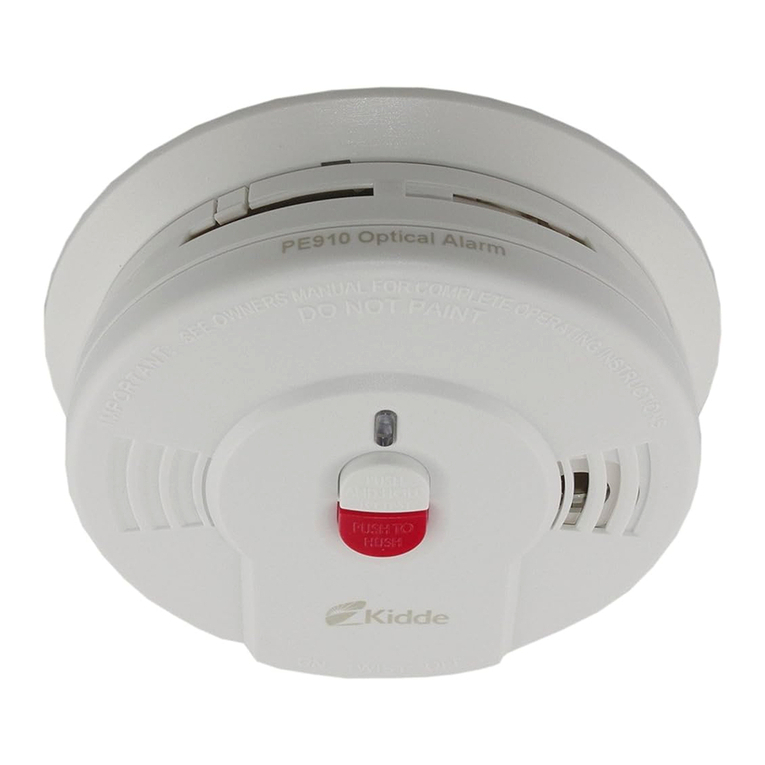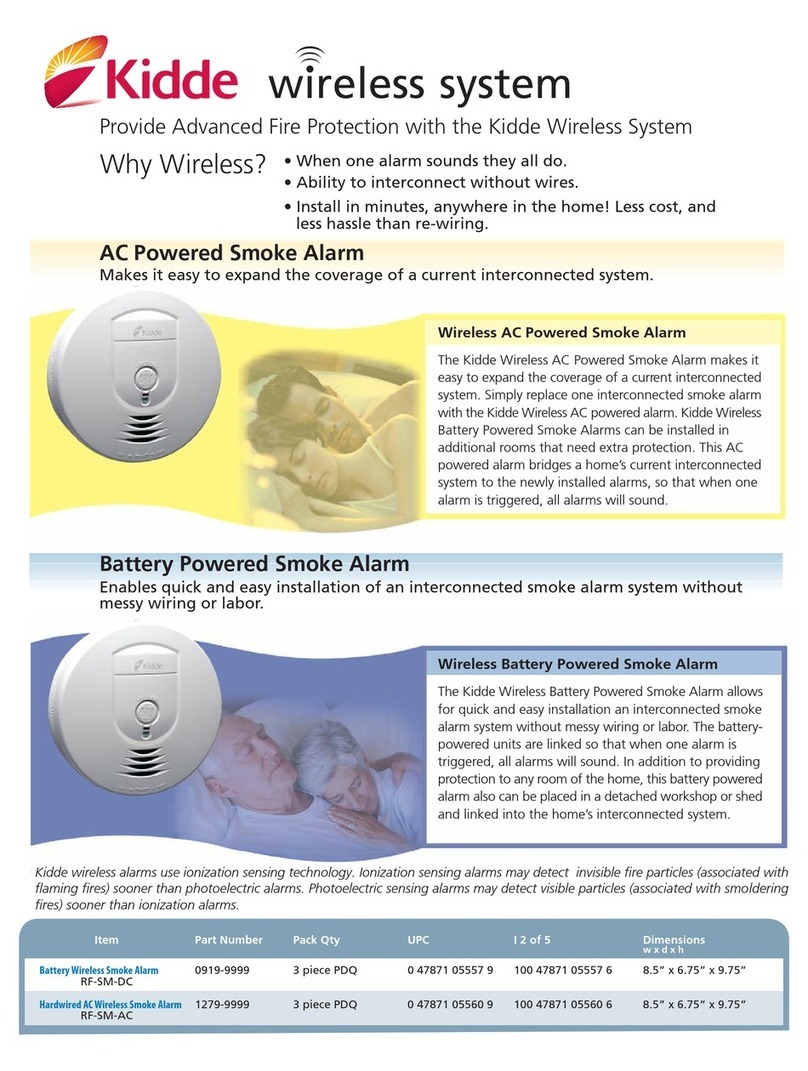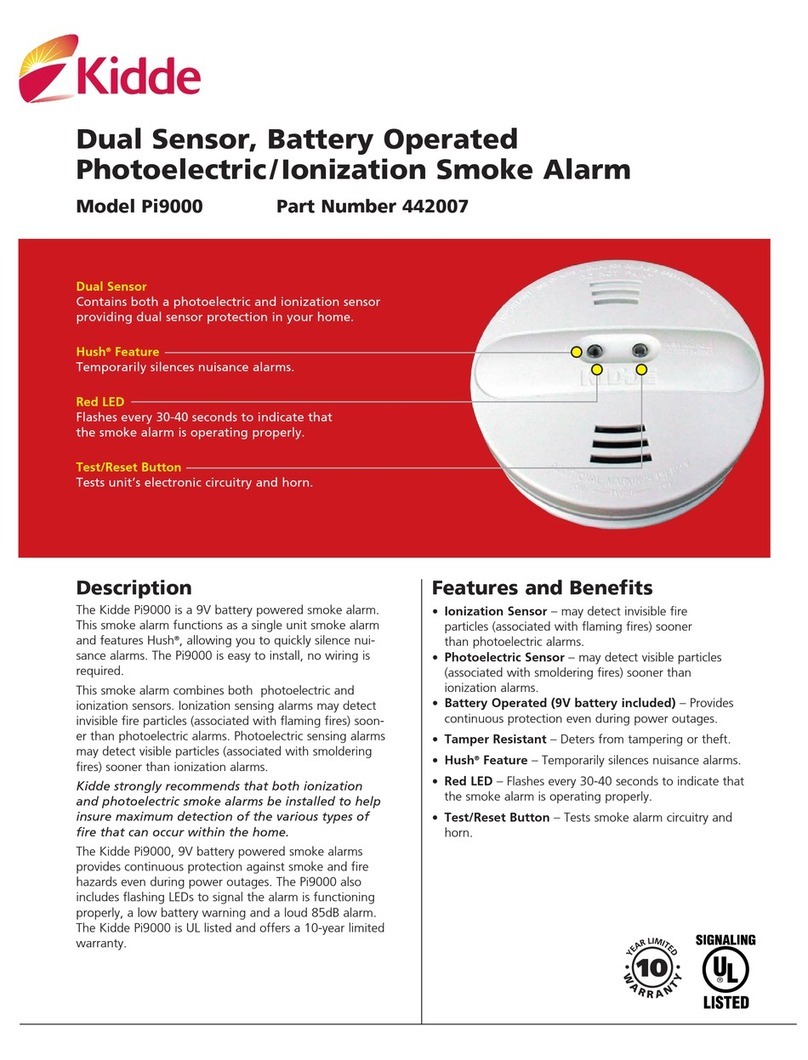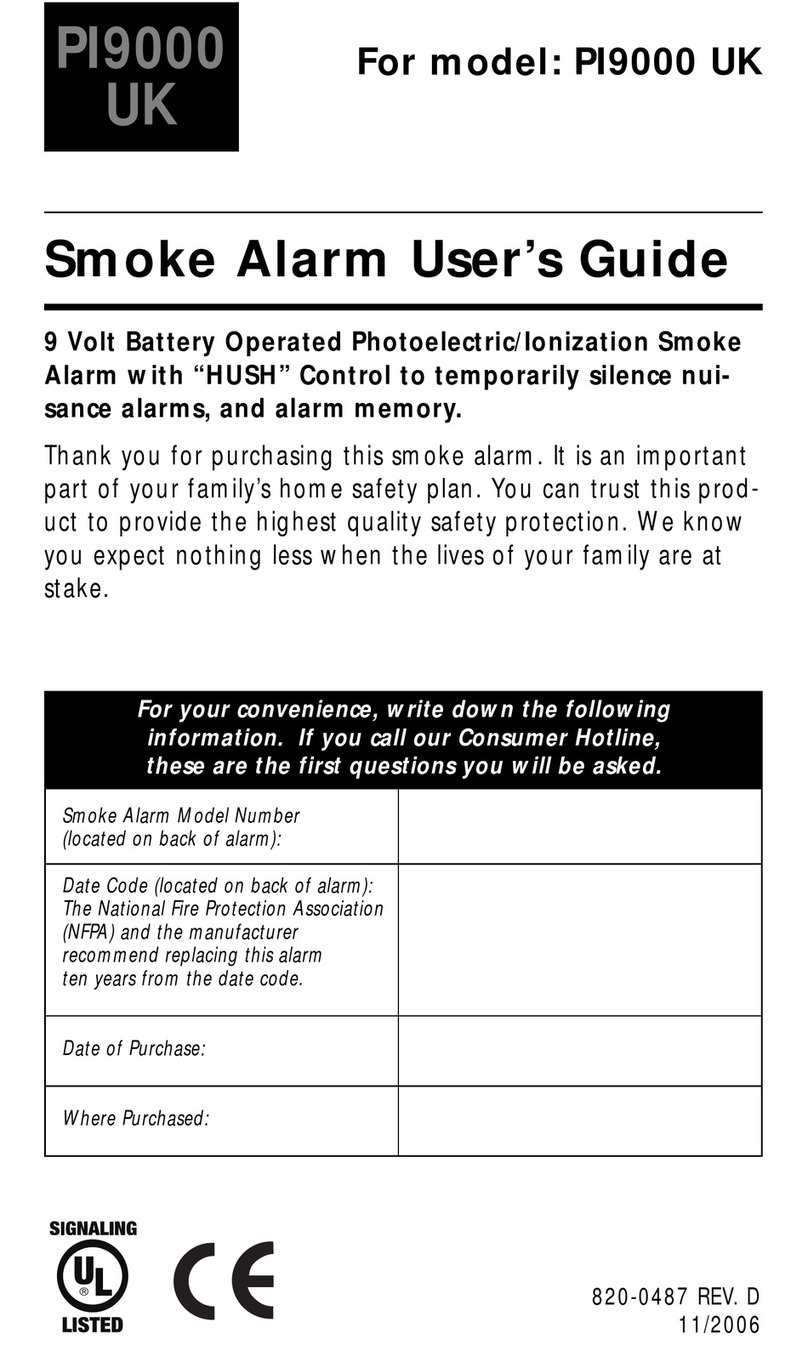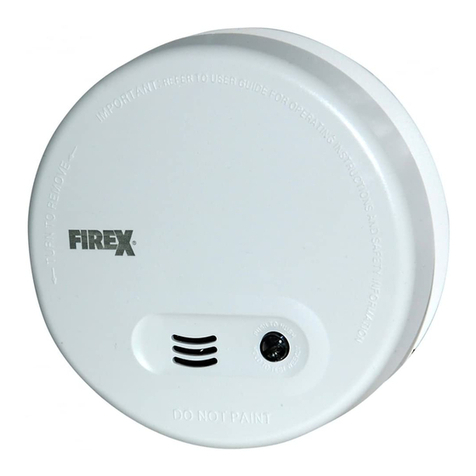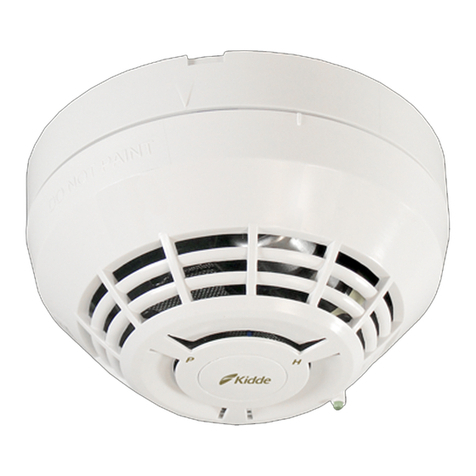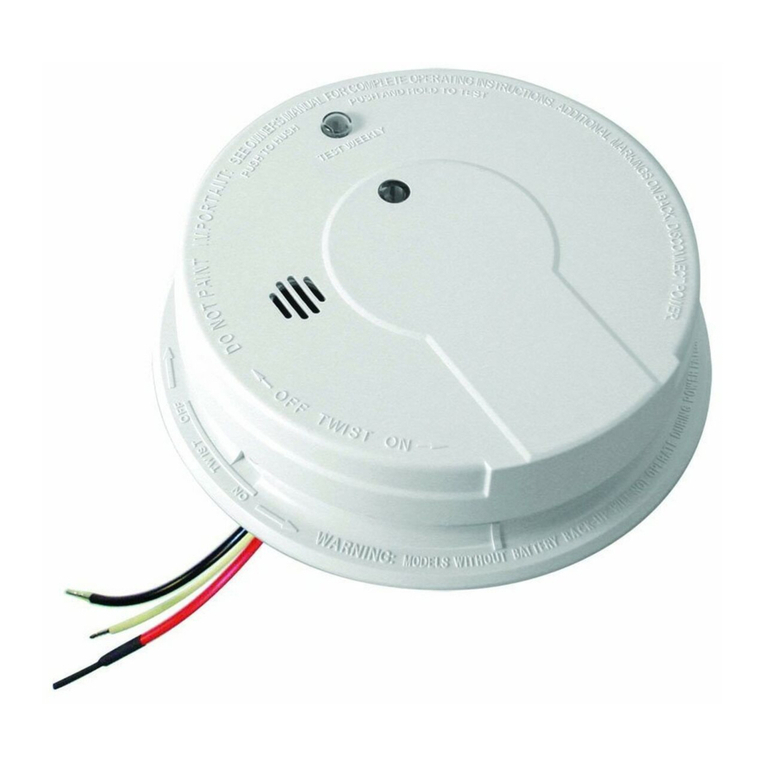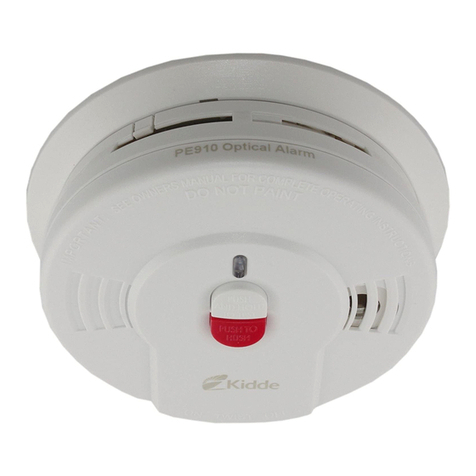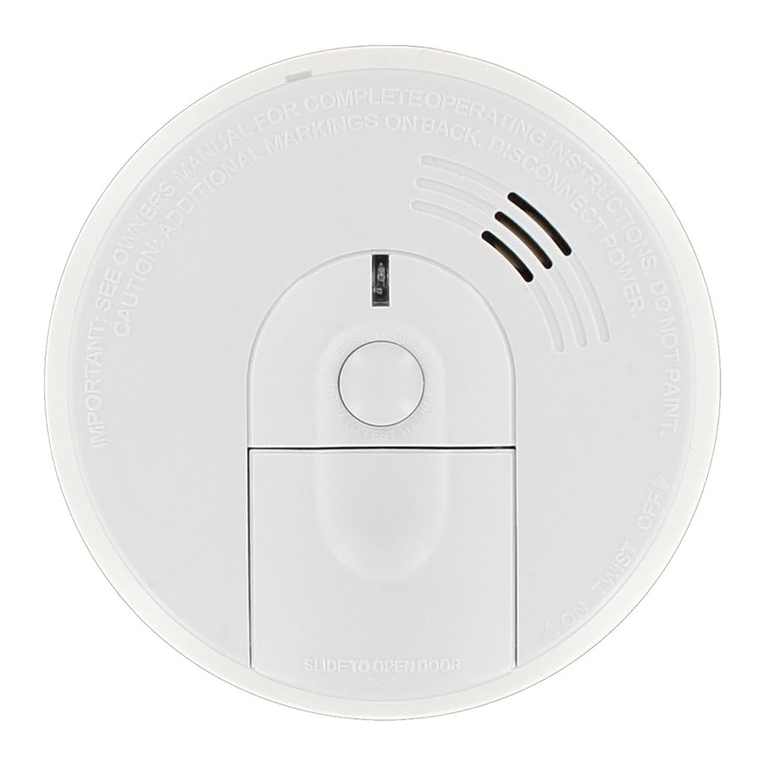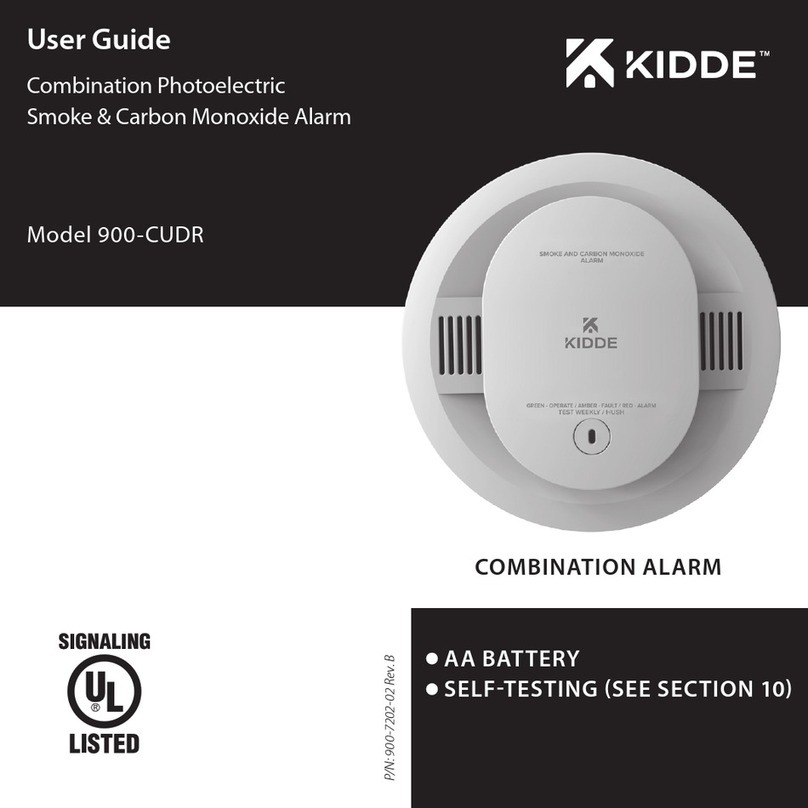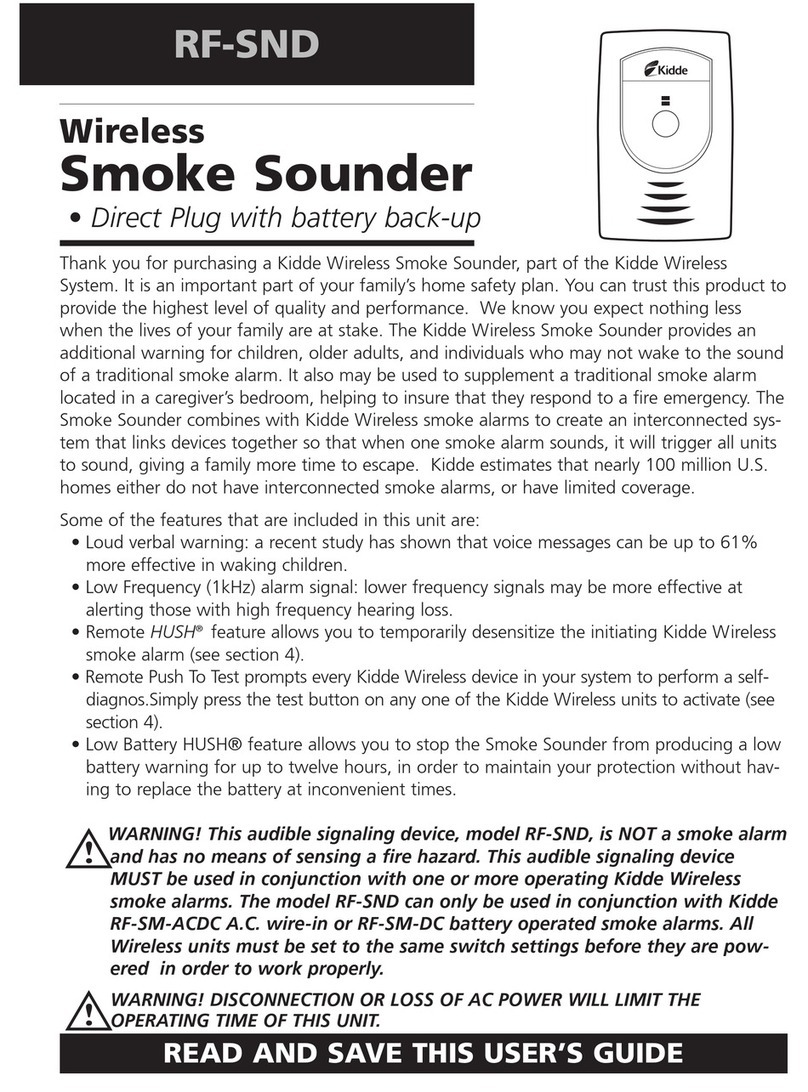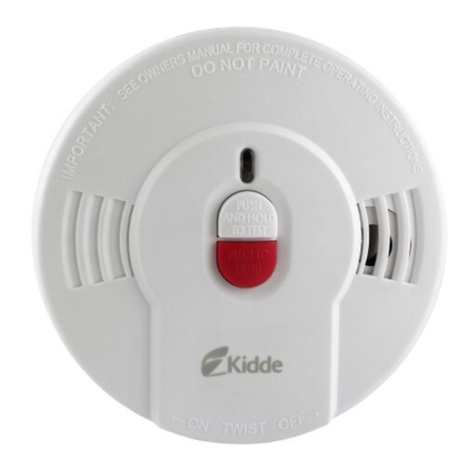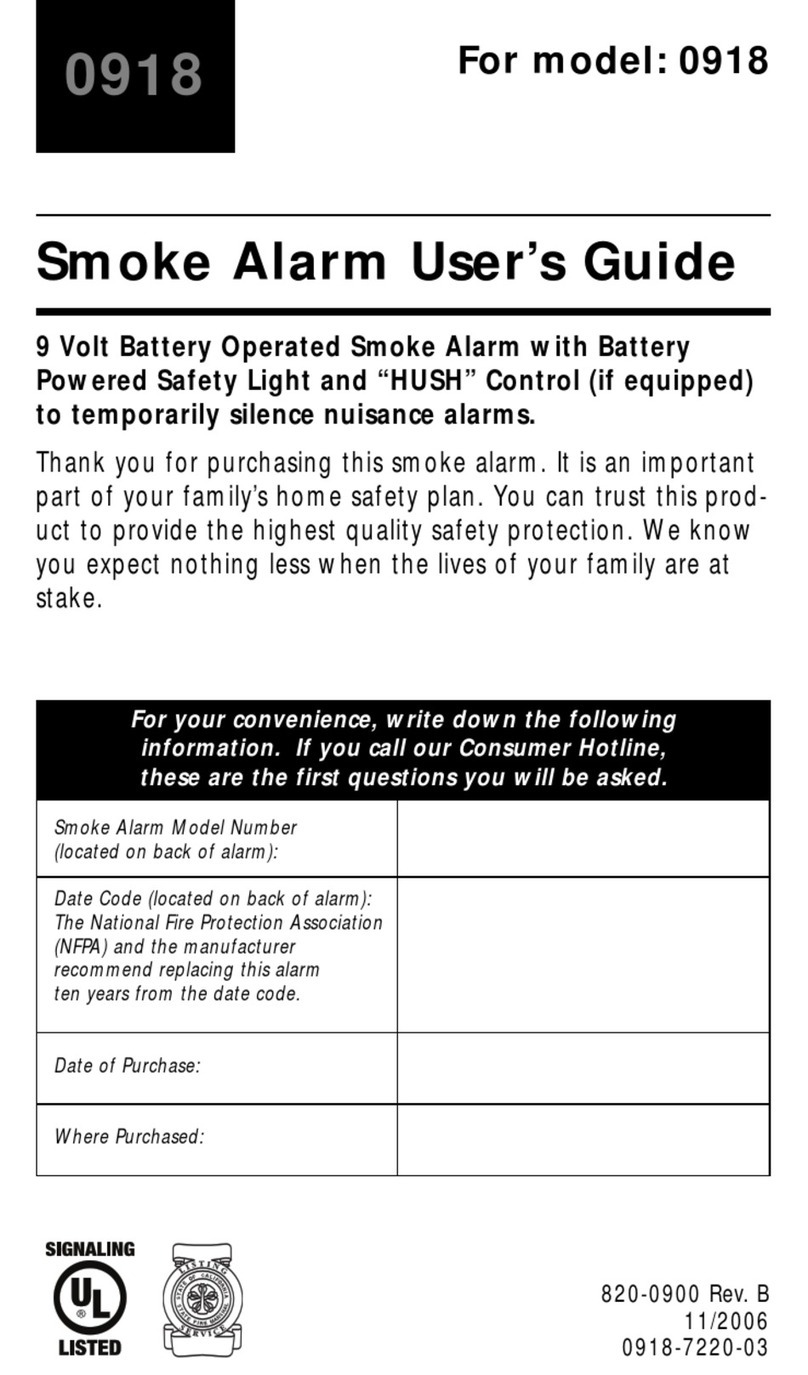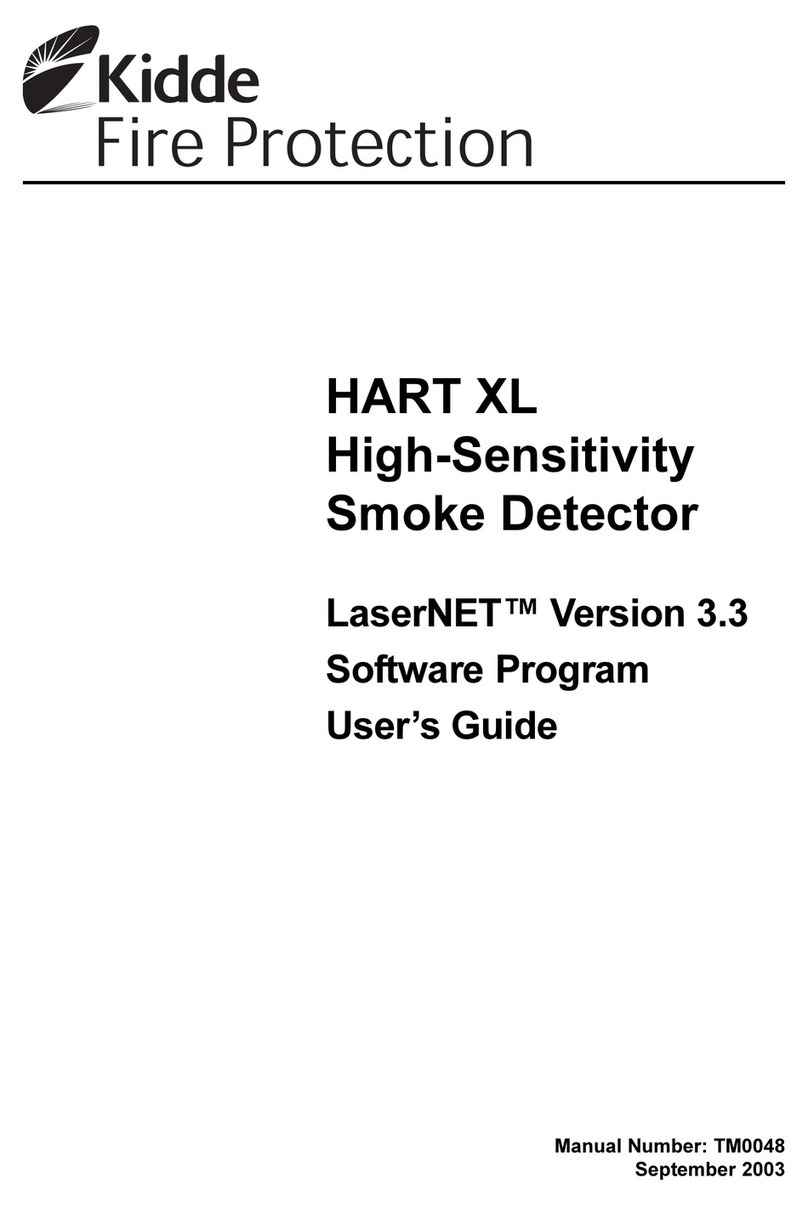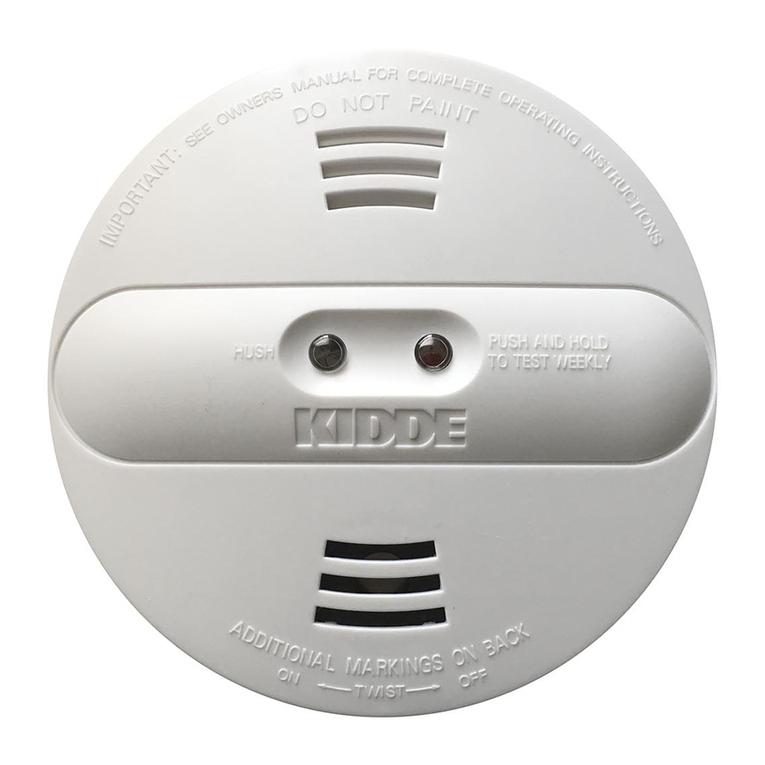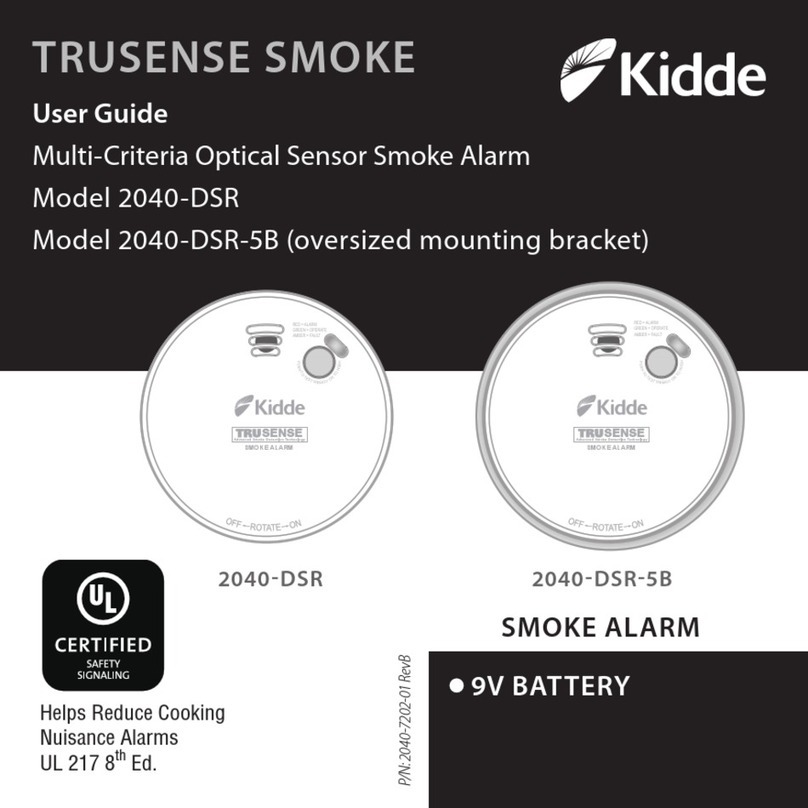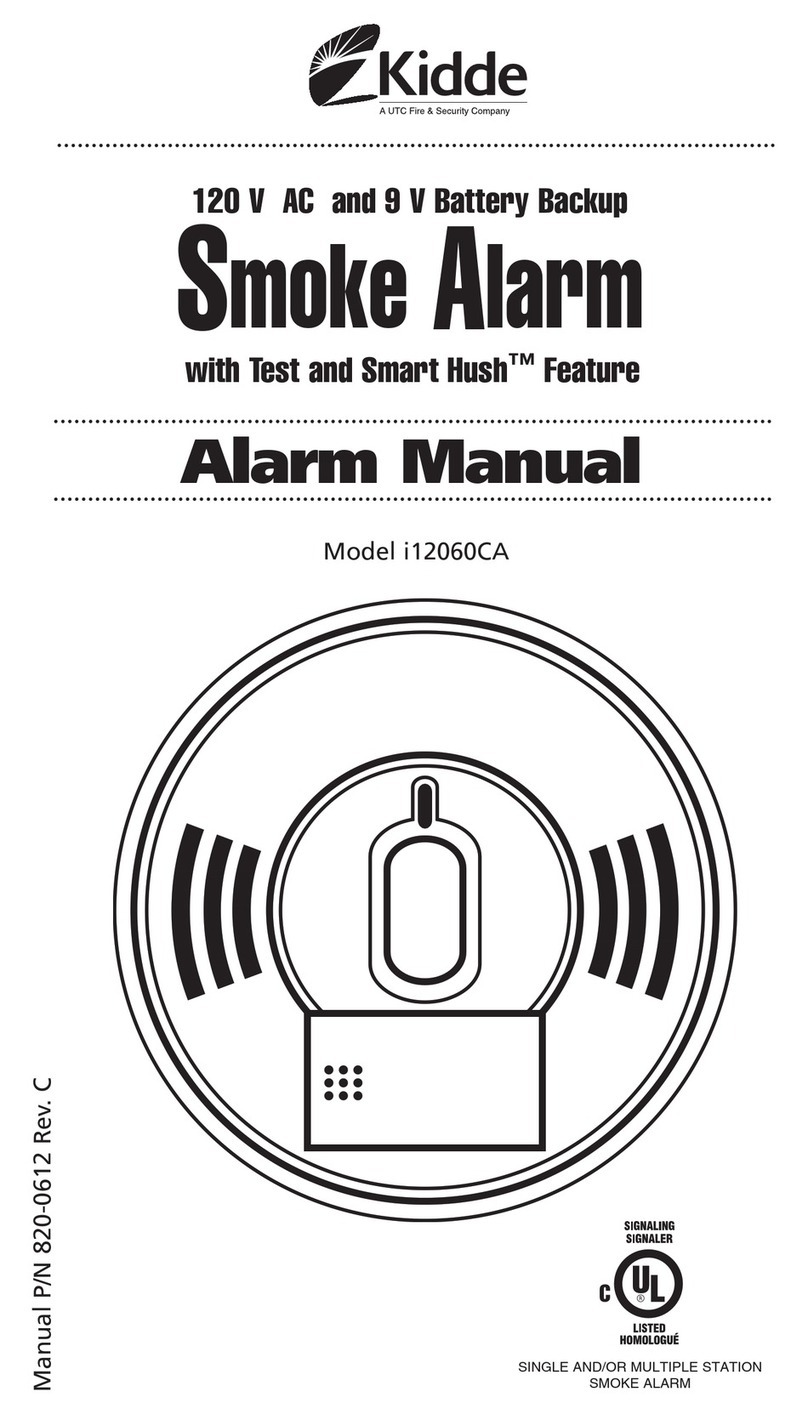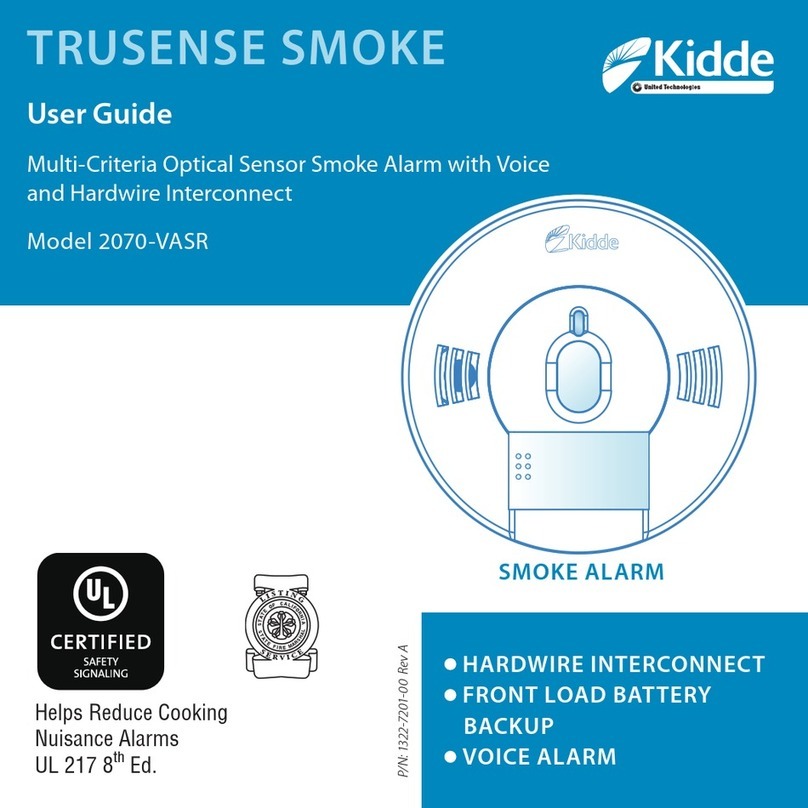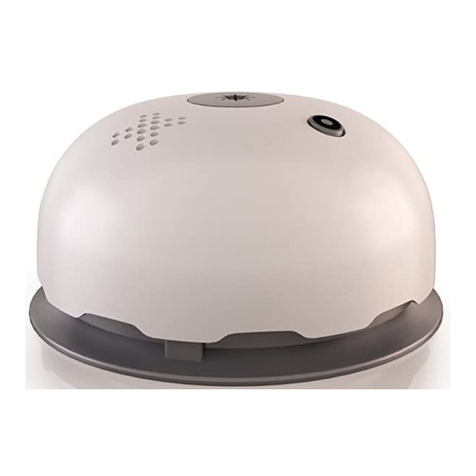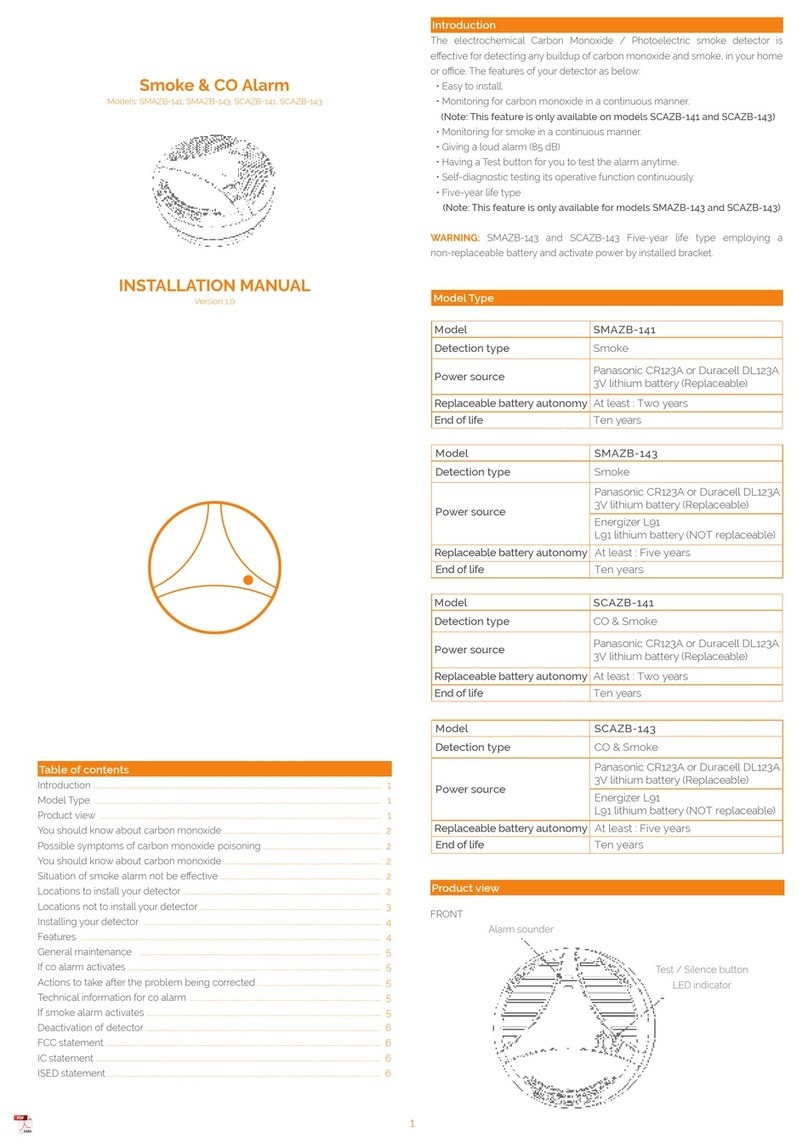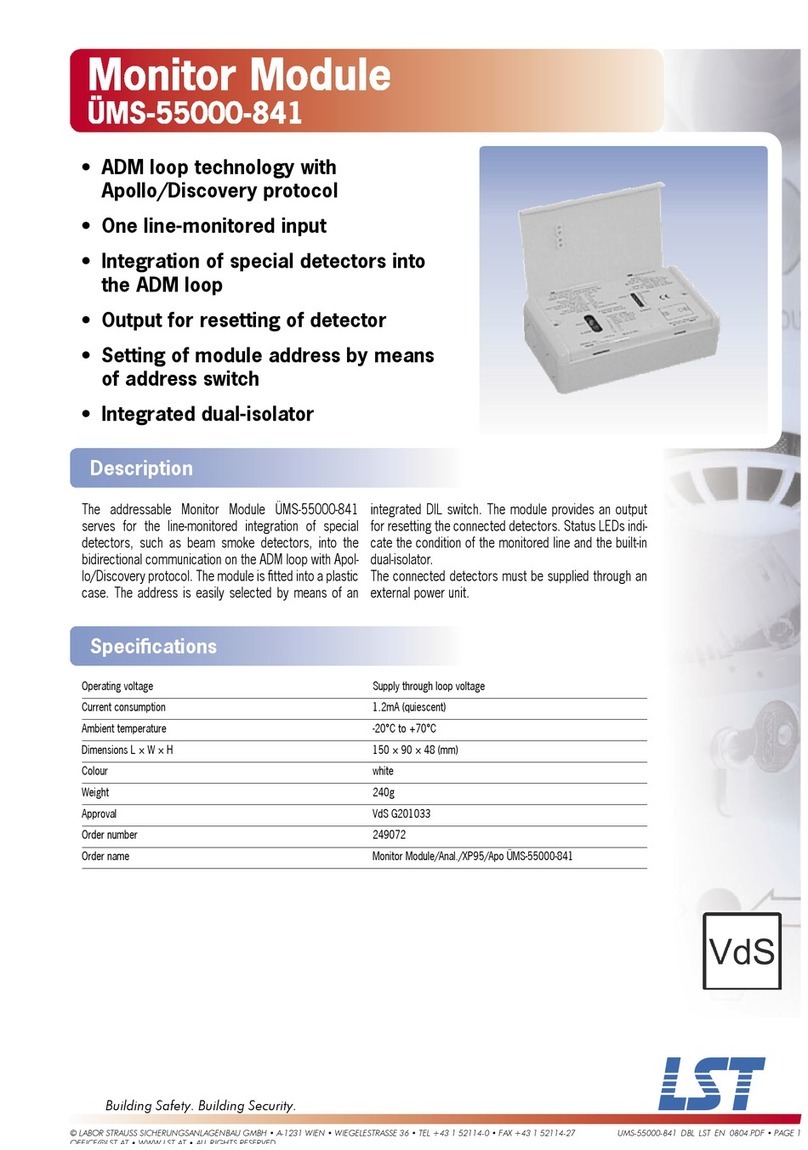
2 / 2 P/N 3102677-EN • REV 001 • ISS 02DEC20
Figure 1: Setting detector address (address 52 shown)
(1) Insert a screwdriver here to set the address
Testing
Before testing, notify the proper authorities that the fire alarm system is
undergoing maintenance and will be temporarily out of service.
Test each sensor in the detector.
Caution: Heat damage. Excessive heat may damage the detector
outer cover. Do not apply excessive heat when using a hair dryer.
When using a Testifire detector tester, you must install a SIGA Testifire
Adapter Assembly.
Make sure the SIGA Testifire Adapter Assembly (model
SIGA2-TSTSPACER) is installed in the Testifire detector tester before
testing. Refer to the SIGA Testifire Adapter Assembly Installation
Sheet (P/N 3101942-ML) for further details.
To perform an initial installation test:
1. Remove the detector from its base and verify that the proper
detector address, trouble signals, and messages are reported.
2. For KIR-OSHD detectors placed in the air ducts, verify that the
airflow is within specifications. See “Specifications” below.
3. If wired for Class A operation, verify that the detector continues to
operate first with SLC_IN disconnected, and then with SLC_OUT
disconnected. (Refer to the installation sheet for the base.)
4. Place a momentary ground fault on the SLC circuit to verify
operation of the ground fault detection circuitry.
5. Run a system detector sensitivity report on all detectors and verify
that readings fall within acceptable limits.
6. Perform a sensor function test, as described below.
To perform sensor function tests:
1. If desired, use the fire alarm control panel to put the detector or
zone into a service group for testing. (Refer to the panel technical
reference manual for instructions.)
2. Activate the smoke sensor using No Climb Products model Smoke
Centurion/M8, FireTech Smoke or Smoke Sabre smoke aerosol
spray, a smoke generator, or the Testifire detector tester per the
manufacturer’s instructions.
3. Activate the heat sensor using a hair dryer (maintaining a distance
of three inches) or using a Testifire detector tester per the
manufacturer’s instructions.
Maintenance
To ensure proper operation, plan maintenance (regular or selected) of
the detector in accordance with the AHJ and all applicable governing
laws, codes, or standards. Refer to CAN/ULC-S536 Standard for the
Inspection and Testing of Fire Alarm Systems and NFPA 72 National
Fire Alarm and Signaling Code.
Refer to Technical Bulletin P/N 3102650-EN for additional information
and cleaning instructions.
Specifications
Operating voltage 15.20 to 19.95 VDC
Current
Normal operating current
Alarm
43 uA
70 uA
Vibration level 10 to 35 Hz, with an amplitude of
0.01 in.
ir velocity [1] 0 to 4,000 ft./min (0 to 20.32 m/s)
Rate-of-rise 15°F/min (8°C/min)
Maximum spacing
for Heat Detectors [2]
50 ft. (15.2 m) centers
Wall mount distance from
ceiling
12 in. (305 mm) max.
Compatible bases
Standard
Relay
Isolator
Audible
KI-SB, KI-SB4
KI-RB, KI-RB4
KI-IB, KI-IB4
KI-ABDT, KI-ABLT, KI-ABST
Compatible detector testers [3] Testifire 1000, Testifire 2000
Operating environment
Temperature
Relative humidity
32 to 100°F (0 to 38°C)
0 to 93% noncondensing
Storage temperature −4 to 140°F (−20 to 60°C)
Environmental compensation Automatic
[1] For duct installation, use a KI-DMP duct detector mounting plate
and install per P/N 3102482-EN.
[2] When replacing KI-HFD and KI-HRD detectors with the KIR-OSHD,
ensure that the spacing is 50 ft. (15.2 m) or less.
[3] Requires the SIGA2-TSTSPACER Testifire adapter assembly.
Regulatory information
North American
standards
CAN/ULC-S529, CAN/ULC-S530, UL 268-7,
UL 268A, UL 521
UL/ULC smoke
sensitivity range
0.5 to 4.36 %/ft. (1.63 to 13.62 %/m) obscuration
UL/ULC fixed-
temperature alarm
rating
135°F (57.2°C)
UL/ULC Actual
alarm point
129 to 141°F (53.9 to 60.6°C)
FCC compliance This device complies with part 15 of the FCC
Rules. Operation is subject to the following two
conditions: (1) This device may not cause harmful
interference, and (2) this device must accept any
interference received, including interference that
may cause undesired operation.
Industry Canada
compliance
This Class A digital apparatus complies with
Canadian ICES-003.
Contact information
For contact information, see www.kidde-esfire.com.
0
2
345
6
8
9
0
1
2
456789
01
11
11
2
TEN
ONE

